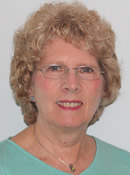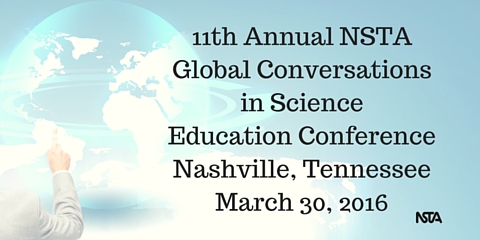NSTA on the International Scene
By Guest Blogger
Posted on 2016-03-21
With the upcoming Global Conversations in Science Education at the NSTA National Conference on Science Education on Wednesday, March 30, 2016, in the Omni Hotel, I am looking forward to reconnecting with the leaders of the Association of Science Education (ASE). I was fortunate to represent NSTA at the ASE Annual Conference held in January at the University of Birmingham. I not only represented and spoke for NSTA at the International Banquet but I also presented a session focusing on the impact of neuroscience research on science teaching. It was a great experience to work with science educators not just from England but other parts of Europe.
The ASE annual conference is very similar to an NSTA annual conference. They had an International Day prior to the start of the conference, several featured speakers, conference strands to help educators plan their schedule, and the ever-popular vendor tent. The conference is held on a university campus when classes are not in session. Having laboratory facilities available was helpful as well as having the large lecture classrooms for featured speakers.
What is Practical Science?
As I attended sessions and interacted with science educators, I noticed that there were a couple of science education language differences. Practical Science was a strand that focused on the hands-on approach to science in the classroom. Initially I thought they were talking about doing experiments to help students obtain the skills needed to study science. But after talking with educators, I learned that practical science (sometimes called practical work) was the place in science instruction where students carry out science. The same questions were being asked there that I often hear asked at NSTA conferences: How do we move from just “hands-on” to include “minds-on” activities? How can we move from “cookbook style” experiences to more open-ended ones? How do students take their learning from the practical science activities to the next level—application? Hearing these questions made me feel at home and I realized that these educators have the same concerns as we do in the United States.
I discovered that both primary and secondary schools hire “school science technicians” to support teachers and pupils directly with practical work. I was a little jealous because it would have been great to have an extra educator to help plan the practical experiences and to make sure that safety was being carried out in the classroom. The Consortium of Local Education Authorities for the Provision of Science Education (aka, CLEAPSS) provides professional development for these technicians as well as science educators. This consortium not only provides resources for the science classrooms but also conducts audits of health and safety in school science departments. Safety is definitely important in UK science classrooms. They are eager to share their resources with U.S. teachers. So, check out the website: www.cleapss.org.uk.
Wicked Problems
My favorite presentation during the conference was “Wicked Problems” by Justin Dillon. I was intrigued by the title, and the speaker did not disappoint. He shared that “wicked problems” are not “evil” problems but problems that are difficult to resolve and not readily addressed by working in disciplinary silos. Working on “wicked problems” is similar to those real-world scenarios we want U.S. students to address. These scenarios are not easily defined from one disciplinary core idea. Solving “wicked problems” will demonstrate to our students that one cannot solve problems in isolation and that teamwork and collaboration are imperative. I applied this presentation to what we want students to do using the Next Generation Science Standards–using science and engineering skills as they learn disciplinary core ideas and apply cross-cutting concepts.
After returning to the U.S., I reflected that these science educators have the same goals as U.S. science educators. First, they are professionals who want to learn about successful strategies that engage all their students in science and STEM. And, second, these educators come together at the conference to learn ways to promote the value of science education in their communities. Overall, these science educators want to make their science classrooms better for their students and they realize the value of attending science education conferences because of the networks they build with other educators.
I encourage NSTA members when given the opportunity to attend a science education conference in another country to do so. You will find a kinship with these educators and build new networks of communication. The NSTA International Advisory Board is a great resource of possible opportunities. Visit their webpage at www.NSTA.org. And if you’ll be attending our conference in Nashville at the end of the month, consider adding the Global Conversations in Science Education miniconference onto your schedule. There will be an international gathering of educators, a poster session, and more. Read the full agenda here.
 Carolyn Hayes is the NSTA President, 2015–2016; follow her on Twitter at caahayes.
Carolyn Hayes is the NSTA President, 2015–2016; follow her on Twitter at caahayes.
The mission of NSTA is to promote excellence and innovation in science teaching and learning for all.
Future NSTA Conferences
2016 National Conference
2016 STEM Forum & Expo
2016 Area Conferences
Follow NSTA
Disclaimer: The views expressed in this blog post are those of the author(s) and do not necessarily reflect the official position of the National Science Teaching Association (NSTA).



